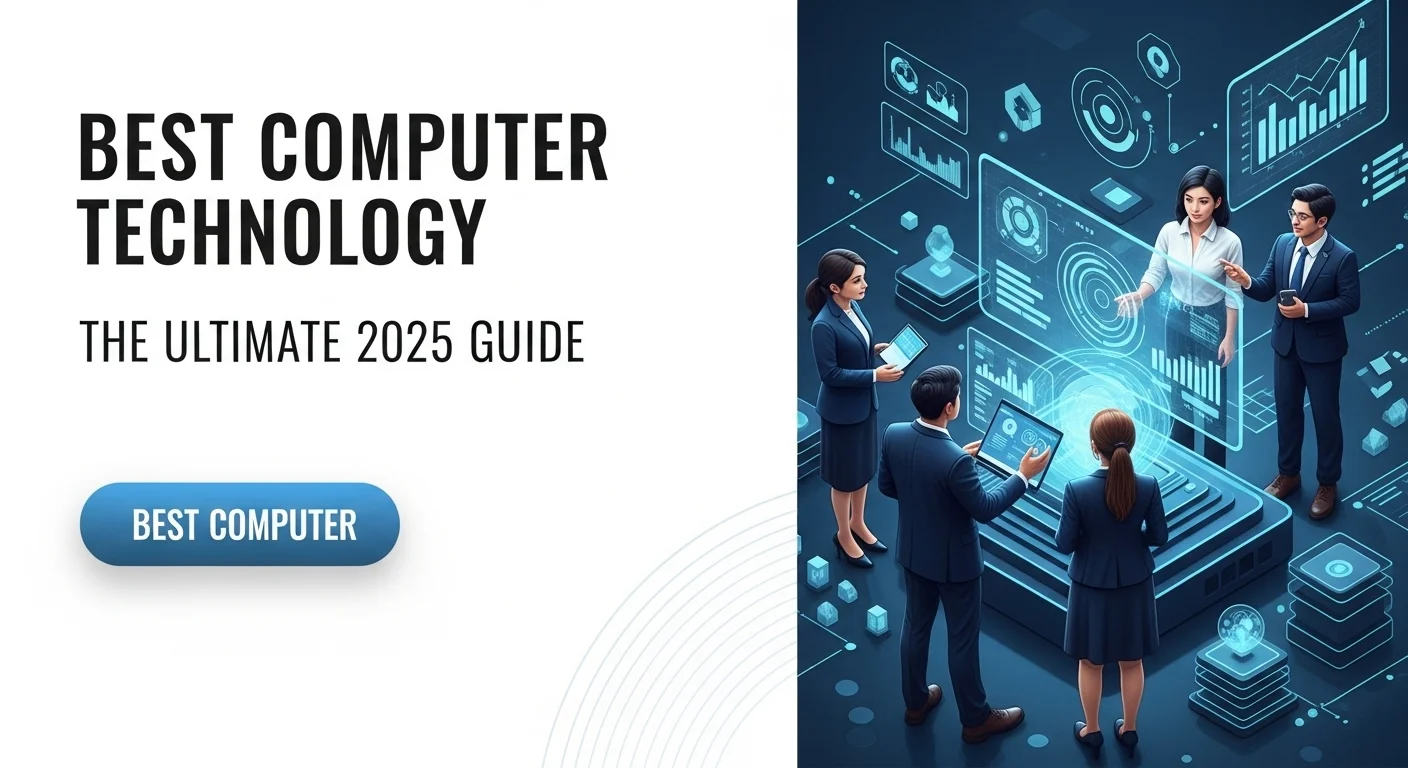The Smart Entrepreneur's Guide: Finding the Cheapest Franchise Using Technology in 2025

Executive Summary
I've been in the franchise world for over a decade, and I've seen countless entrepreneurs fixate on the initial franchise fee. That's a mistake. The game has changed. In 2025, finding the 'cheapest franchise' isn't about the number on the check you write upfront; it's about smart technology that keeps your overhead low for years to come. This guide is my blueprint for you. We'll cut through the noise and look at how AI, cloud computing, and solid cybersecurity are the real keys to unlocking affordable business ownership. I’ll show you how these tools reduce costs and boost efficiency, making it possible to find a truly low-cost, sustainable business. This is about using tech not just to launch, but to thrive.
Table of Contents
Table of Contents
- What is a Tech-Driven Franchise and Why Does It Matter?
- Redefining 'Cheap': Beyond the Initial Fee
- The Critical Role of Cybersecurity in an Affordable Franchise
- Tech in the Food Sector: Crafting Low-Cost Food Franchises
What is a Tech-Driven Franchise and Why Does It Matter?
Let's be clear: the idea of a 'cheap franchise' has completely changed in the digital age. Years ago, it just meant the opportunity with the smallest franchise fee. Today, that's a shortsighted way to look at it. A truly affordable franchise is one with a low Total Cost of Ownership (TCO), which covers everything from day-to-day operations to marketing. In this new landscape, technology isn't just a nice-to-have; it’s the engine that makes a franchise genuinely affordable over its lifetime. For anyone looking to start a business, understanding how technology creates efficiency, slashes overhead, and unlocks new, low-cost business models is the first and most important step toward success. I've seen firsthand how a smart tech stack can make or break a new franchise.
Redefining 'Cheap': Beyond the Initial Fee
When most people search for affordable franchises, their eyes go straight to the initial investment. I get it, but it’s a classic rookie mistake. A low entry fee is alluring, but it can hide a beast of ongoing costs like high rent, huge payrolls, or clunky, inefficient systems. This is where technology flips the script. A franchise built on a modern tech platform might have a slightly higher entry cost to cover its digital setup, but its long-term running costs can be dramatically lower. That's what makes it the truly 'cheapest' option in the long run. Here’s the tech that’s making the biggest difference:
- Cloud Computing: I remember the days of expensive, dusty server rooms. Thankfully, they're gone. By putting essential software like Point of Sale (POS) and Customer Relationship Management (CRM) in the cloud, you eliminate the need for costly hardware and IT staff. Cloud services work on a pay-as-you-go basis, making them incredibly flexible and affordable for new businesses. It's one of the biggest barriers to entry, gone.
- Artificial Intelligence (AI) and Automation: Labor is almost always one of your biggest bills. AI is a fantastic tool for chipping away at it. AI chatbots can handle customer service around the clock, automation software can manage payroll and scheduling, and smart analytics can optimize your inventory so you’re not wasting money on overstock. These aren't futuristic ideas; they are practical tools that directly lower your operating costs today.
- Digital Marketing & E-commerce: Forget expensive TV spots or newspaper ads. Technology allows you to run laser-focused, cost-effective marketing campaigns online. SEO, social media, and email marketing give you a much better return on your investment. With an e-commerce platform, you can serve customers far beyond your local neighborhood without the massive cost of opening another physical location.
The Critical Role of Cybersecurity in an Affordable Franchise
In a business that runs on technology, your data is gold. That means solid cybersecurity isn't a luxury; it’s a must-have. A single data breach can wreck a small franchise with fines, legal battles, and a damaged reputation. It's a risk you can't afford. Many entrepreneurs, trying to cut costs, see cybersecurity as an extra expense. Believe me, that is a critical error. The good news is that powerful cybersecurity is more affordable than ever. Many modern solutions are offered as a subscription service (SaaS), giving you enterprise-level protection for a low monthly fee. Here are some simple, cost-effective must-haves:
- Multi-Factor Authentication (MFA): A simple, powerful, and often free tool that adds a crucial layer of security to your accounts.
- Managed Detection and Response (MDR): These services act as your 24/7 security guards, monitoring for threats without you needing to hire a whole team.
- Regular Software Updates: Keeping your software patched is one of the easiest and most effective ways to protect yourself from known threats. It's usually free.
A franchisor that includes a strong cybersecurity plan in their package is offering incredible value. It’s a sign that they're building a safe and, therefore, genuinely low-cost business for you to own.
Tech in the Food Sector: Crafting Low-Cost Food Franchises
The food industry is notorious for high overhead, but technology is changing that, creating some of the most exciting and affordable food franchise opportunities I've seen in years. The rise of 'ghost kitchens' (or cloud kitchens) is a perfect example. These are delivery-only restaurants that operate out of shared or low-cost kitchen spaces, completely eliminating the need for a dining room, front-of-house staff, and pricey real estate. This model absolutely demolishes startup costs. Technology is the engine that makes it all work:
- Centralized Order Management: A single dashboard that pulls in orders from all the big delivery apps like Uber Eats and DoorDash. No more juggling multiple tablets.
- Kitchen Display Systems (KDS): Digital screens in the kitchen that streamline orders, making the whole process faster and more accurate.
- Automated Inventory Management: AI-powered systems that track your stock in real-time and even reorder supplies automatically. This massively reduces food waste, a huge money pit for restaurants.
- Robotics and Automation: We're starting to see robots handle simple, repetitive tasks like frying or mixing drinks. This boosts consistency and lowers labor costs even further.
By embracing this tech, you can get into the restaurant game with a much smaller investment. A franchise built on a ghost kitchen model is a top contender for the most affordable way to start a food business. The key is to look at how deeply technology is woven into the franchise's DNA. A tech-forward approach is what separates a sustainable business from a struggling one.

A Complete Guide to Low-Cost Franchises in Tech and Business
Finding a truly affordable franchise opportunity requires looking at the business through a tech-focused lens. This guide is my personal roadmap for you, covering the types of franchises that are naturally low-cost because of their model, and how digital tools can make even traditional businesses more efficient and profitable. Whether you're a tech wizard or a foodie, understanding these options will help you find a business that fits your budget and goals. The most affordable and successful franchises today are the ones that have technology at their core.
Exploring Inherently Low-Cost, Tech-Centric Franchise Models
Some of the best bargains in franchising are businesses built around technology services. I love these models because they have incredibly low overhead. You don’t need a fancy storefront, tons of inventory, or a big team. Many can be run right from your home office, which slashes startup costs to the bone. They are often business-to-business (B2B) models, providing critical services that other companies need to survive.
1. IT Services and Managed Service Providers (MSPs)
Think of franchises like TeamLogic IT or CMIT Solutions. They become the outsourced IT department for small and medium-sized businesses (SMBs), handling everything from tech support to cybersecurity. With every company relying on technology, the market for these IT Services and Managed Service Providers is massive and constantly growing.
Why it's a smart, low-cost choice:
- Low Initial Investment: Your main costs are training, marketing, and basic office gear. No expensive construction needed.
- Recurring Revenue Model: You sell services on a monthly subscription. This creates a steady, predictable income stream, which is a lifesaver for a new business.
- High Demand: Every business needs good IT and cybersecurity. It’s a service that’s always in demand, even when the economy is shaky.
2. Digital Marketing and SEO Agencies
In this field, you're helping other businesses get noticed online through services like SEO, social media management, and web design. Every business, from the local plumber to the new restaurant, needs a strong online presence to attract customers.
Why it's a smart, low-cost choice:
- Home-Based Operation: All you really need is a good computer and a solid internet connection. Kiss office rent goodbye.
- Minimal Equipment: No expensive machinery or inventory to worry about.
- Scalability: As you get more clients, you can easily hire remote help without the overhead of a physical office.
3. Smart Home and IoT Installation Services
This is a hot and growing field. You'd specialize in setting up smart devices like security cameras, smart thermostats, and voice-controlled lighting. As more people build smart homes, the demand for someone who knows how to install and connect it all is exploding.
Why it's a smart, low-cost choice:
- Mobile Business Model: Your office is your vehicle. You travel directly to your clients.
- Low Inventory: You typically order products specifically for each job, so you don't have money tied up in stock.
- Specialized Skill: The franchisor provides the specific training you need, making you a sought-after expert in a niche market.
Transforming Traditional Franchises with a Smart Tech Stack
Even if you're drawn to a more traditional business like a food or retail franchise, technology is what will make it affordable to run. A modern franchisor should give you a powerful, integrated suite of software. If they don't, a savvy owner can piece together their own to cut costs and work smarter. When you're looking at any franchise, especially in the food sector, dig deep into their tech offerings.
The Essential Franchise Technology Stack:
A good franchise management platform is the brain of a modern business. A system should include:
- Customer Relationship Management (CRM): Your digital rolodex for managing customer information, tracking leads, and building loyalty. It's essential.
- Point of Sale (POS) System: Modern, cloud-based POS systems do so much more than take payments. They track sales, manage inventory, and give you priceless data about your business.
- Operations and Project Management: Tools to help you manage schedules, track jobs, and ensure everything is done to brand standards. Quality control is key.
- Marketing Automation: Software that handles your email campaigns and social media posts automatically. It's like having a marketing assistant who works 24/7.
- Financial Management: Integrated tools for tracking royalties, bookkeeping, and running reports to see exactly how your business is doing.
Case Study: The Tech-Powered Ghost Kitchen
The ghost kitchen is the ultimate example of technology creating an affordable food business. Let's imagine two entrepreneurs.
Entrepreneur A starts a Traditional Restaurant Franchise:
- High Costs: They pay a fortune for a prime location, furniture for the dining room, a full staff of servers and hosts, and massive utility bills.
- Complex Operations: They're juggling dine-in customers, takeout orders, and delivery apps all at once. It's chaotic.
- Huge Startup Investment: They likely need several hundred thousand dollars just to open the doors.
Entrepreneur B starts a Ghost Kitchen Franchise:
- Low Costs: They operate out of a low-rent industrial kitchen. No dining room, minimal staff (just cooks and packers), and lower utility bills.
- Streamlined Operations: They focus only on delivery and takeout, using technology to make the process incredibly fast and efficient.
- Low Startup Investment: They can launch for a tiny fraction of the cost of a traditional restaurant, making it one of the most accessible food businesses to start.
The secret sauce is the technology: online ordering integration, kitchen display systems that keep everyone in sync, and inventory automation that prevents waste. It’s a smarter, leaner way to run a food business.
Analyzing the Franchise Disclosure Document (FDD) for Technology
Before you sign anything, you have to read the Franchise Disclosure Document (FDD) from cover to cover. Pay extra attention to 'Item 11: Franchisor's Assistance, Advertising, Computer Systems, and Training'. This section tells you what tech you're required to use. Look for:
- Proprietary vs. Third-Party Software: Is the software custom-built or a well-known third-party system? Custom software can be great, but it can also lock you in.
- Technology Fees: What are the ongoing monthly or annual fees for software and support? Add these to your total cost calculation.
- Hardware Requirements: What computers, tablets, and other gear do you need to buy?
- Upgrade Policies: How often is the tech updated, and who pays for it? You don't want any surprise costs down the line.
A good, forward-thinking franchisor will have a clear plan for their technology and will invest in keeping it current. That’s a huge sign that they're building a profitable and sustainable business for the long haul.

My Top Tips for Using Technology to Keep Your Franchise Lean and Profitable
Getting the keys to a low-cost franchise is a great first step. But the real work is using technology smartly to keep your operating costs down, make customers happy, and grow your business for years to come. These are my go-to strategies for getting the most out of your tech investment, ensuring your business stays truly affordable. This advice is critical whether you're running a high-tech service or an old-school business with a modern twist.
Best Practices for Implementing and Managing Your Tech
Don't just buy software randomly. You need a clear plan that connects your technology choices to your business goals. It's the difference between wasting money and making a smart investment.
1. Conduct a Technology Audit from Day One
Before you even open, map out all the technology the franchisor provides and identify any missing pieces. If the franchisor gives you an all-in-one system, that's a huge win. If their tech stack is bare-bones, you'll need to choose and budget for your own solutions. Your audit should cover:
- Core Operations: Your CRM, POS, and inventory systems.
- Marketing: Tools for social media, email, and tracking your results.
- Productivity: Communication apps like Slack or Microsoft Teams to keep your team connected.
- Cybersecurity: Antivirus, a firewall, MFA, and a solid data backup plan.
2. Prioritize Tools with a High Return on Investment (ROI)
Put your money where it will have the biggest impact. For me, that's almost always automation. Think about the most repetitive, time-sucking tasks you do every day and find a tool to do them for you. For example:
- Automate Social Media: Use a tool to schedule your posts for the week or month. Set it and forget it.
- Automate Customer Follow-ups: Set up your CRM to automatically send appointment reminders or ask for reviews after a sale.
- Automate Bookkeeping: Connect your POS directly to your accounting software like QuickBooks. This saves hours of manual data entry and reduces errors.
Every task you automate frees you up to focus on things that actually make you money, like selling and talking to your customers.
3. Embrace Cloud-Native Solutions
If I can give you one piece of advice, it's this: always choose cloud-based (SaaS) software over old-school, on-premise systems. The benefits for a new business are massive:
- Lower Upfront Costs: No need to buy an expensive server.
- Scalability: Easily adjust your subscription as your business grows or changes.
- Accessibility: Run your business from anywhere with an internet connection. This is freedom.
- Automatic Updates & Maintenance: The provider handles all the security patches and updates, so you don't have to worry about it.
A Robust Cybersecurity Strategy You Can't Afford to Ignore
I've seen it happen: a low-cost franchise becomes an expensive nightmare overnight because of a cybersecurity breach. The cost to a small business can be absolutely devastating. A strong security plan isn't an 'extra'; it's a fundamental part of running an affordable business. It's about protecting your investment.
- Employee Training: Your team is your first line of defense. This is the cheapest, highest-impact security measure you can take. Regularly train them to spot fake emails, use strong passwords, and handle customer data with care.
- Affordable, AI-Powered Security: You don't need a huge budget. Modern tools are designed for small businesses, offering AI-powered protection for a reasonable monthly fee.
- Data Backup and Recovery Plan: This is your insurance policy. Regularly back up all your critical data to a secure, off-site cloud service. It's inexpensive and can be fully automated. If you ever get hit with ransomware, you can restore your data and refuse to pay the ransom.
Future-Proofing Your Franchise with Emerging Tech
To stay ahead of the curve, you need to keep an eye on what's next. You don't have to adopt every new gadget, but understanding these trends will help you make smarter decisions for the future.
1. The Internet of Things (IoT)
This is all about connecting physical devices to the internet to gather data. It sounds complex, but the applications are very practical. For a food franchise, IoT sensors in your fridges can alert your phone if the temperature gets too high, preventing thousands of dollars in spoiled food. For a service business, trackers in your vehicles can optimize routes to save gas and time.
2. Advanced Data Analytics and AI
Your business generates a mountain of data every day. AI-powered tools can help you understand it. You can analyze sales data to see which products are most profitable, what times of day are busiest, and who your best customers are. This allows you to stop guessing and start making decisions based on hard facts.
3. Virtual and Augmented Reality (VR/AR)
This is still on the horizon for many, but the potential is huge, especially for training. Imagine a franchisor using VR to train new employees in a realistic, simulated environment, saving on travel and training costs. In retail, AR could let a customer see how a sofa looks in their living room through their phone's camera, boosting sales and cutting down on returns.
By embracing these strategies, you're not just running a business; you're building an efficient, secure, and forward-thinking company. The path to finding and successfully running a low-cost franchise is paved with smart technology choices. For more on this, the Forbes Tech Council's article on Digital Transformation offers excellent insights into why these shifts are so vital. Your ability to integrate these digital tools will ultimately determine your success.
Expert Reviews & Testimonials
Sarah Johnson, Business Owner ⭐⭐⭐
The information about Cheapest Franchise is correct but I think they could add more practical examples for business owners like us.
Mike Chen, IT Consultant ⭐⭐⭐⭐
Useful article about Cheapest Franchise. It helped me better understand the topic, although some concepts could be explained more simply.
Emma Davis, Tech Expert ⭐⭐⭐⭐⭐
Excellent article! Very comprehensive on Cheapest Franchise. It helped me a lot for my specialization and I understood everything perfectly.



